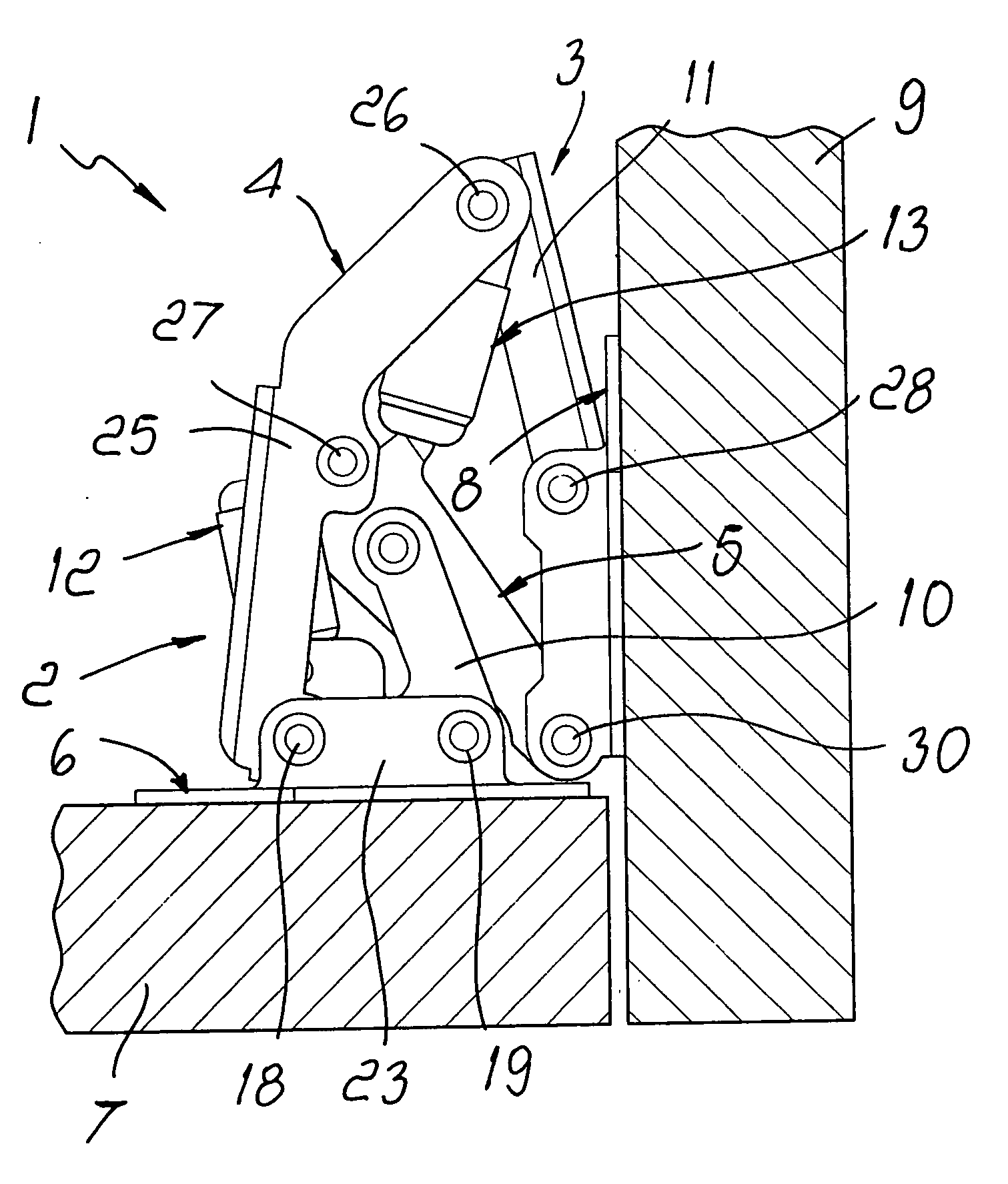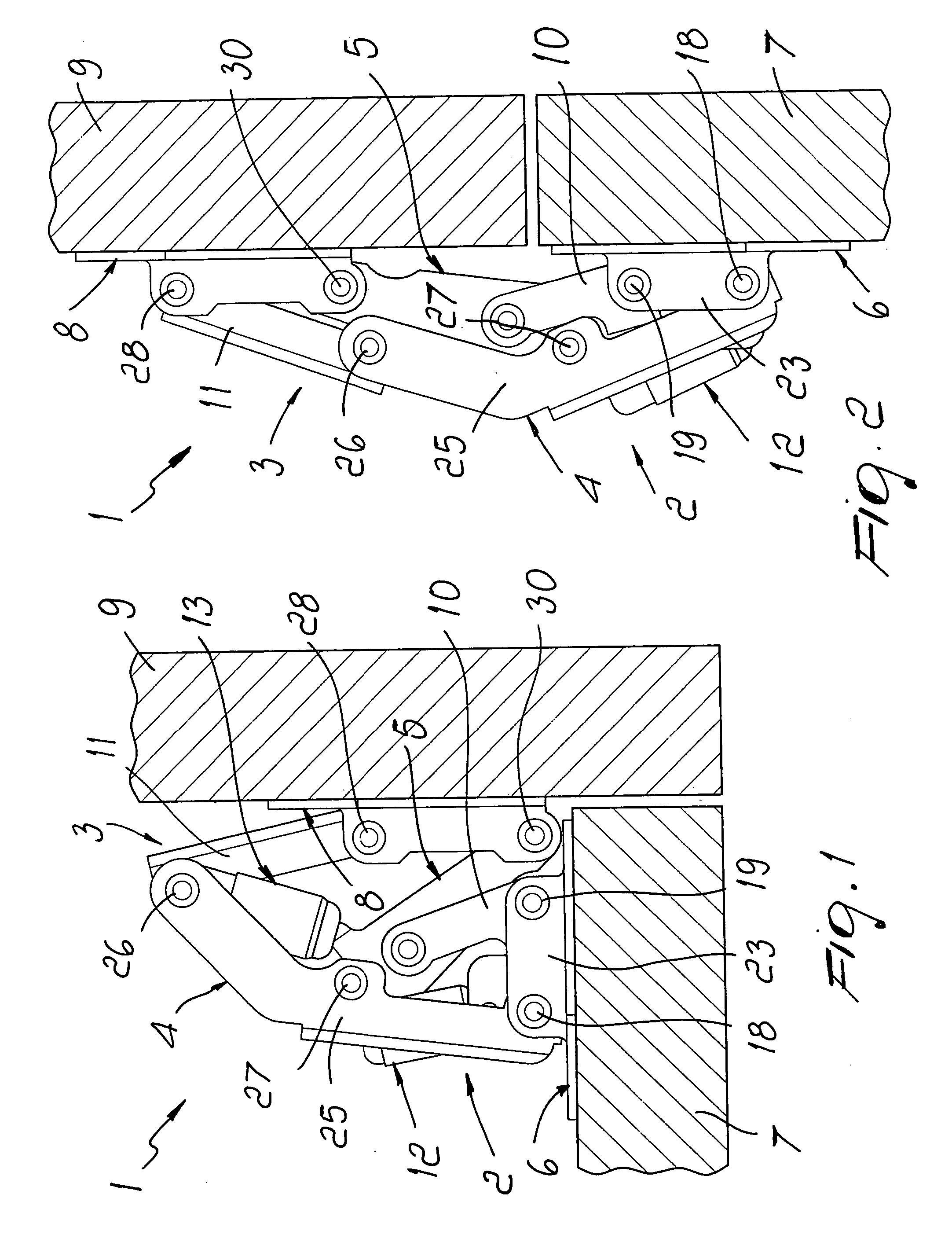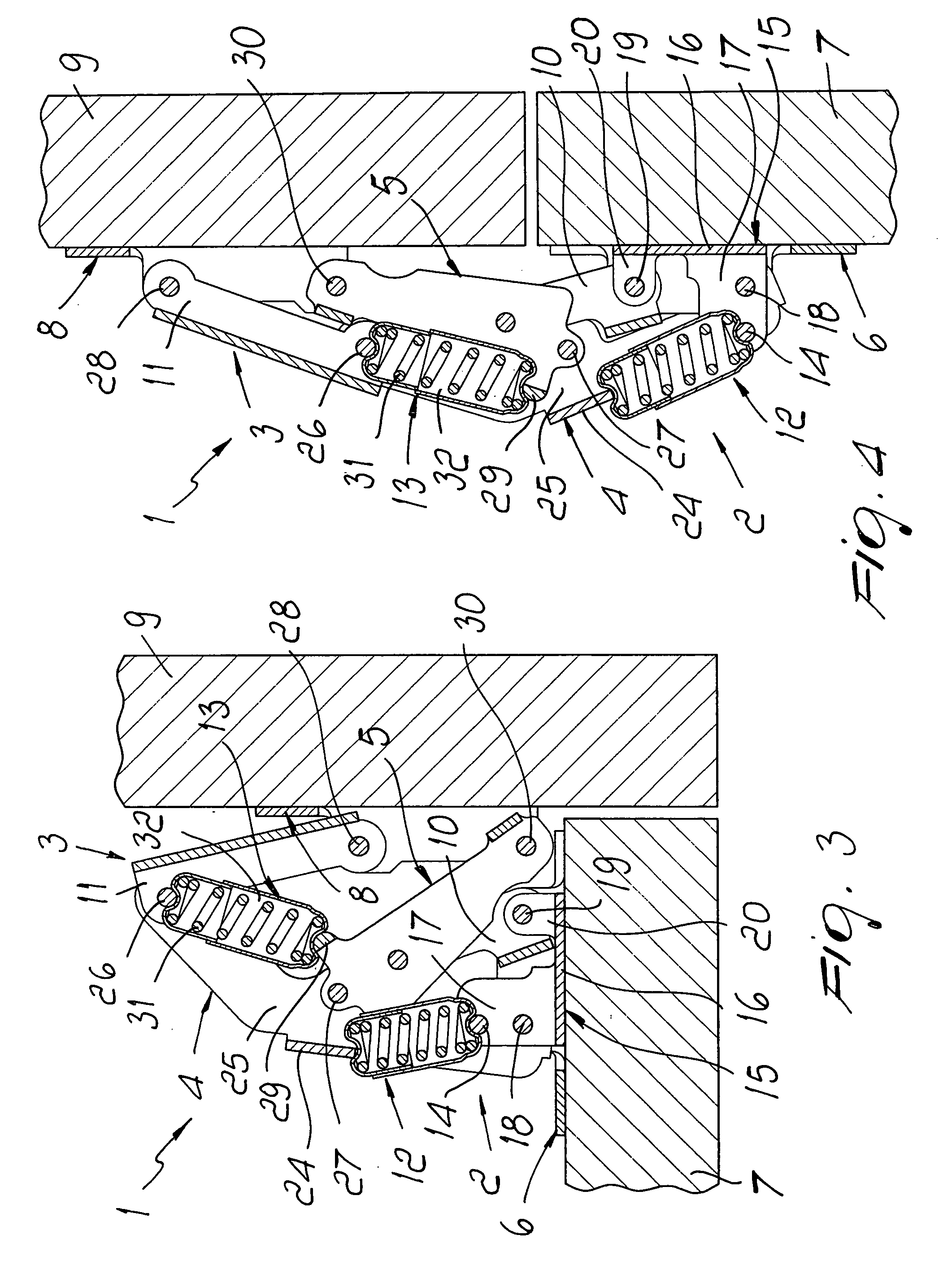Snap hinge for supporting a closure element
a technology of latching element and latching hinge, which is applied in the field of latching hinge for supporting a closure element, can solve the problems of limiting user access to the contents of the compartment, hinges are not free, and the latching is not stable, so as to reduce the structural complexity of the latching element, the latching is stable and sa
- Summary
- Abstract
- Description
- Claims
- Application Information
AI Technical Summary
Benefits of technology
Problems solved by technology
Method used
Image
Examples
Embodiment Construction
[0029] With reference to the figures, the reference numeral 1 designates a snap hinge.
[0030] The hinge 1 comprises a first articulated quadrilateral 2 and a second articulated quadrilateral 3, which share a first lever 4 and a second lever 5 and have as their base element respectively a plate 6 for coupling to a fixed element 7 and a plate 8 for fixing to a closure element 9.
[0031] With particular but not exclusive reference to cabinets for caravans or the like, the fixed element 7 is constituted by the wall that delimits in an upper region said cabinet and the coupling plate 6 is anchored to the surface of said wall that faces the internal compartment.
[0032] The closure element 9 is instead constituted by a door, and the fixing plate 8 is anchored thereto on the surface that is designed to face the compartment when the door is arranged in a position for closing the cabinet.
[0033] Each of the articulated quadrilaterals 2, 3 further comprises a respective arm.
[0034] In particula...
PUM
 Login to View More
Login to View More Abstract
Description
Claims
Application Information
 Login to View More
Login to View More - R&D
- Intellectual Property
- Life Sciences
- Materials
- Tech Scout
- Unparalleled Data Quality
- Higher Quality Content
- 60% Fewer Hallucinations
Browse by: Latest US Patents, China's latest patents, Technical Efficacy Thesaurus, Application Domain, Technology Topic, Popular Technical Reports.
© 2025 PatSnap. All rights reserved.Legal|Privacy policy|Modern Slavery Act Transparency Statement|Sitemap|About US| Contact US: help@patsnap.com



